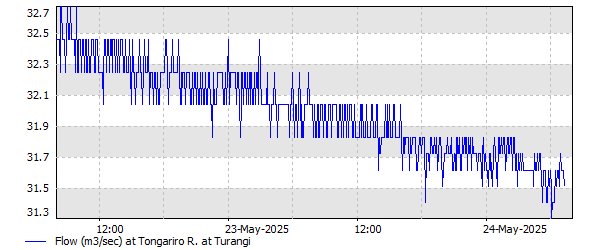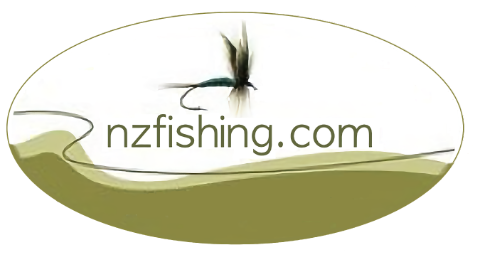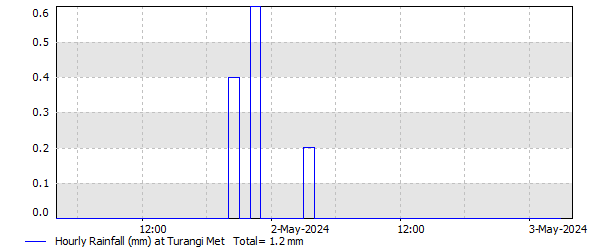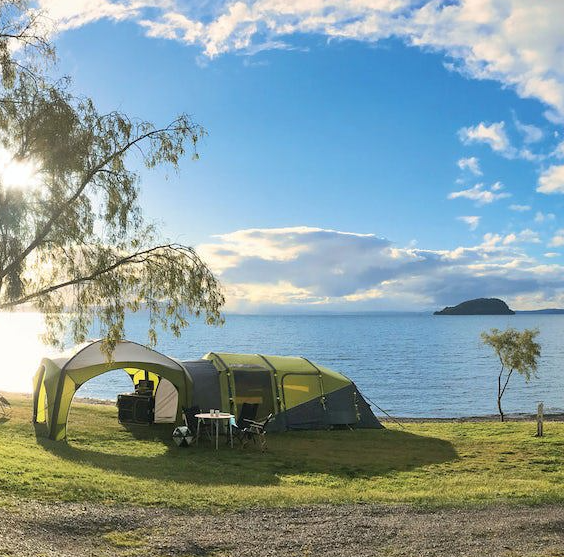Tongariro River
|
The Tongariro River is regarded as one of the world's finest trout fishing destinations. It is a premier fly fishing water with a world-wide reputation for the size, number and strength of the trout and the challenge they present to anglers. It is the major tributary of Lake Taupo and during the winter months hundreds of thousand large well condition fish move up it to spawn. It is New Zealand's principle winter fishery. |
| Fish type | Brown trout and rainbow trout averaging around 2kg in weight but with many much bigger fish present in the river. Rainbows tend to make up the bulk of the catch. | |
| Situation | The Tongariro is a wide swift flowing river which enters Lake Taupo's near the township of Turangi. The river flows over a mixture of rock, gravel and sand and tends to clear relatively quickly after rain. The river is large and deceptively powerful. While it is prone to flooding after heavy rain it does clear quickly. | |
| Maps |
Lower Tongariro access map Upper Tongariro access map |
|
| Check conditions | 
The river flow at the Major Jones Pool, Turangi
Rainfall at Turangi For angler ratings of the various pools, see Tongariro River Pools Ratings. View the MetService weather forecast. |
|
| Recreational release dates |
Genesis Energy’s recreational flow releases on the Tongariro River result in an increase in flow and water level on sections of the Tongariro river on specific days once or twice a year. The increased amount of water in the river can bring large numbers of trout from the lake into the river to spawn. Check Genesis Energy's environmental news for:
|
|
| Description |
The Tongariro is a versatile river offering stalking of large brown trout in the lower reaches during the warmer months, fly fishing at the delta, river-run rainbows and browns in the autumn and winter, and an excellent evening rise in summer. Although there is good fishing throughout the year, it is the migratory runs of fish upstream in late autumn and winter that attract most anglers. The Pools of the Tongariro The river is a mixture of deep pools, long runs and boisterous rapids. During the popular winter fishing season, most anglers prefer to fish the pools and runs where fish often rest as they move upstream to reach the spawning beds. While the major pools and sections of the river are named, these can change quickly after a flood causing maps to become out of date. For ratings of the Tongariro River pools based on feedback from anglers, see Tongariro pools ratings coming soon. Fishing etiquette The Tongariro is extremely popular when and so it is vital to be aware of the fishing etiquette that applies. More info coming soon. |
|
| Spawning runs |
The Tongariro is the major spawning river for the Taupo catchment with around a third of all the spawning fish migrating up the Tongariro system. These number in the tens of thousands of fish every year. When the runs occur The runs are spread out between April and November with the main rainbow runs tending to be be at the end of winter between late July and September. When to fish Runs are stimulated by rain and cooler water temperatures. The best time to fish tends to be as the river starts to clear after a heavy rain though migratory runs can happen at any time. When the large runs happen the numbers of fish entering the system can be measured in the tens of thousands. |
|
| The Delta |
The delta of the Tongariro River presently has two mouths facing in different directions. Big, well-conditioned deep-water trout reside in the delta. Note: This area changes year by year as floods alter the way the river enters the lake. In the past there have been a number of different mouths to this river and no doubt they will continue to change in the future. When to fish While this area fishes well, it is not best suited to fishing in bright sunshine. At night, the fishing is best in dark conditions rather than on a moonlit night. Methods Boat fishing: Most anglers fish the delta from a well-anchored boat (often using an anchor both fore and aft) and using a deeply sunk lure that is slowly retrieved close to the bottom. You must identify the rip so you can position the boat in the centre of the current on the edge of the sandy lip where it drops away into deep water. The best fishing is to be had by fishing lures up the steep drop-off and that requires the boat to be anchored just on the edge of the channel formed by the rip. As the bottom is very soft and the channel edge drops steeply into very deep water, wading is not recommended. Heave and leave: Access The only way to access the delta is by boat as no roads and tracks lead to it. See the local access map (coming soon). |
|
| Lower reaches |
The lower reaches extends from the delta up to the Bridge Pool at the southern outskirts of Turangi. Description Much of the lower section of the river is less attractive than the middle and upper reaches. The pools are less well defined in the last few kilometres before the river enters the lake which means there are fewer holding places for the fish. Most fish that enter the river move quickly through the lower reaches or take shelter behind the many fallen trees and logs. Casting can be difficult as the vegetation can grows close to the river. However the Reid and Bridge Pools are one of the most productive sections in the river with easy wading and close proximity to other town pools. Below the Lower Access for most anglers is to cross over at the tail of the Bridge Pool car park area but perhaps the easier access is from the track between the Bridge Pool and the Swirl Pool. The Swirl Pool is now so silted up and shallow it can be easily crossed over most of its length. Methods Both wet-lining and nymphs work in this section. The easiest fishing are in the pools nearest the bridge however, as the underwater obstacles and close bankside vegetation can make fishing more difficult in the lower pools. Access The pools below the bridge on State Highway 1 can be reached by car in some cases though the waters closest to the delta can only be reached by walking or from a boat. Boats are allowed upstream only as far as the Downs Pool about 4.5kms from the mouth. The track to Delatours Pool is very rough. See the local access map (coming soon). |
|
| Middle reaches: Judges Pool to the Red Hut Bridge |
From Judges Pool to the Red Hut Bridge Description The middle reaches between Judges Pool and the Red Hut Bridge have many of the most productive and popular pools including the Major Jones and the Hydro Pool. Being located within easy access to the township, these pools receive very heavy angling pressure especially during the main spawning runs. There can be queues of anglers wanting to get onto some stretches. Trout tend to rest in the pools as they make their way upstream and when a good run of trout move through the fishing can be spectacular. Methods The variety of pools offers a range of angling options though nymphing remains the most popular. Some pools do respond well to wet-lining and it is not uncommon to see both methods being fished in one pool. Consequently, the rules outlined in fishing etiquette must be followed if tempers are not to flair. Wading is easy in many areas though anglers should take care as the river is more powerful than it at first appears. Access State Highway 1 runs through Turangi and alongside the Tongariro River as far as the Red Hut Pool and bridge. At this point the road follows the Poutu Stream but there is walking access to the majority of pools with good walking tracks following the river on both banks for most of its length. The pools that are furtherest upstream and open to winter fishing can be reached only on foot but it is an easy walk. See the local access map (coming soon). |
|
| Middle reaches: Red Hut Pool to the Fence Pool |
From Red Hut Pool to the Fence Pool (Winter Fishing Limit) Description The middle reaches from the Red Hut Bridge to the Fence Pool (which is at the limit for winter fishing) offer a wide variety of water. The water often flows over a rocky bed Access Most of the pools in the middle reaches are accessed via a small side road that leads off SH1 directly after crossing the Pouto Stream. This road (really just a track) branches |
|
| Upper reaches |
The upper reaches of the Tongariro extend from above the Fence Pool to the headwaters. (Summer fishery) Description The upper reaches above the winter fishing limit offer excellent fishing from December through to the end of May. The river is a series of runs, rapids and deep pools with anglers able to spot fish in the generally very clear water. The scenery is stunning and as few anglers venture into this area can provide excellent wilderness fishing (though anglers will often be sharing the river with rafters and kayakers). In April and May there can even be some early runs of large spawning fish though most fishing is for the high population of resident trout that reach some very impressive weights. Methods The upper reaches can be fished with nymphs and wet flies, and in the warmer months there can be a very good evening rise to caddis. Access As the upper reaches run through a very steep-sided gorge for much of its length, there is very limited vehicle access and the recommended alternative to a difficult tramp is to take one of the rafts that are set up to ferry anglers downstream from below the hydro power dam to the best fishing spots. A rafting trip is usually best done over at least two days to enable a group of anglers to access the best waters and to fish the morning and evening rises. See the local access map (coming soon). Fishing the largely inaccessible gorge with Tongariro Raft Fishing Adventures |
|
| Fish numbers and size | Rainbow and brown trout averaging around 2kg but going up to 7kg or 15lb in weight make their spawning migration up the river during the winter months of April to November. There is also a very good population of resident fish that stay in the river throughout the year, some of which reach good sizes. | |
| Methods | With both wet fly and nymph fishing during the spawning runs, the key is to get your fly close to the bottom as the fish will not rise far to take it. During the summer trout can be nearer the surface and do rise more freely so adjust your method accordingly. | |
| Recommended tackle |
For nymph fishing:
For wetfly fishing:
|
|
| Recommended lures |
Nymphs: Heavily weighted Globugs, Hare and Copper, Pheasant Tail, Halfback and caddis patterns such as the Horned Caddis on the rivers during the spawning season. Dry flies: Coch-y-Bondu. Cicada patterns and Green Beetle and caddis on warm early summer evenings Wet flies:
|
|
| Tributaries | Tributaries include:
- Poutu Stream |
|
| Regulations (1) | ||
| Applicable to | Tongariro River from the mouth to the Fence Pool approximately 350 metres above the confluence with the Whitikau Stream. | |
| Region | Taupo fishery area regulations | |
| Season | All year | |
| Methods |
Fly fishing only. Boat fishing from an anchored boat is permitted between the mouth and Downs Pool. No boat fishing upstream of Downs pool. |
|
| Bag limit | 6 | |
| Size limit (cm) | 35 cm minimum | |
| Regulations (2) | ||
| Applicable to | Tongariro River upstream of the Fence Pool | |
| Region | Taupo fishery area regulations | |
| Open season |
1 Dec-30 Jun: Upstream of Poutu intake except the area mentioned below. 1 Oct-31 May: Between Poutu intake and the landmark that is 500 metres upstream of the confluence with the Whitikau stream, including tributaries. |
|
| Methods | Fly, spinner No boat fishing. |
|
| Bag limit | 6 | |
| Size limit (cm) | 35 cm minimum | |





